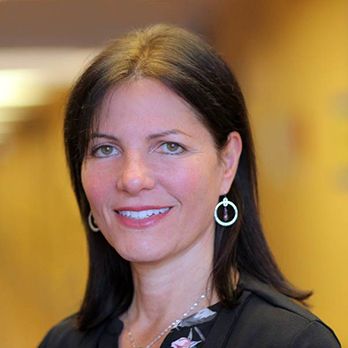Dying docs opt for less aggressive end-of-life care
Doctors facing death may be less likely to seek surgery or visit the intensive-care unit during the last six months of their lives when compared to non-clinicians. They are also less likely to ultimately die in a hospital, according to studies posted Tuesday in JAMA that looked at use of end-of-life services.
“Actual experience with hospital deaths may differentially motivate physicians to avoid them,” the authors of one report - including Holly Prigerson, Ph.D, the Irving Sherwood Wright Professor of Geriatrics at Weill Cornell Medical College, Professor of Sociology in Medicine, and Director, Center for Research on End-of-Life Care - wrote. Physicians may also opt for less rigorous care, because of their “knowledge of its burdens and futility,” the researchers added.
Policy surrounding end-of-life care has been highly politicized in recent years. Physicians have argued for Medicare to support conversations about the pros and cons of end-of-life treatments. Opponents on the other hand feared this could result in so-called “death panels,” and care decisions based on financial concerns.
Last fall, the CMS moved forward with plans to create distinct Medicare billing codes and rates for end-of-life care planning. The policy was welcomed by physicians, who said it would allow them more opportunity to have conversations about end of life as part of yearly checkups.
While medical advancements have helped people to live longer, they have also led to increased demand for end-of-life care and associated costs. By 2050, the population of people age 65 and over is projected to be 83.7 million, almost double that of 2012, in part due to aging baby boomers. The population of people living to be age 80 and older is projected to reach 30.9 million, according to the U.S. Census Bureau (PDF).
Also, hospice usage among Medicare fee-for-service patients has been growing. Rates nearly doubled from 26% in 2002 to 47% in 2012, according to a 2015 report from the Medicare Payment Advisory Commission (PDF). Spending on hospice care also rose from just under $1 billion to $3.4 billion during that time period.
The Jan. 19 issue of JAMA delves into a number of studies, commentary and viewpoints on death and dying in this current environment. In one commentary, surgeon Dr. Atul Gawande of Boston's Brigham and Women's Hospital calls the picture of care at the end of life “disturbing.” Holding palliative care consultation and end-of-life discussions as a last resort is “incorrect and harmful,” he wrote.
End-of-life care must consider both how much treatment is needed and balance that with the quality of life it provides to the patient. Given their knowledge of healthcare, two studies specifically aimed to examine the intensity of treatments chosen by doctors nearing death, compared with members of the general population.
Dr. Prigerson's study looked at records of Medicare beneficiaries age 66 and older who died between 2004 and 2011 in Massachusetts, Michigan, Utah and Vermont. Death records were used to obtain education and occupation status so researchers could differentiate physicians' end-of-life choices from those of the general population.
The study found that in the last six months of life, on average about 25% of a total 2,376 physicians who died had surgery and 26% were admitted to the ICU. That's compared with just over 27% of the general population (159,255) of patients. On average, 32% of the general population died in a hospital; less than 28% of physicians did. The study was conducted by researchers from Brigham and Women's Hospital; the Mayo Clinic in Rochester, Minn.; and Weill Cornell Medicine, New York.
Another analysis used U.S. Census Bureau mortality survey data and the National Death Index to look at individuals between ages 30 and 98 who died between 1979 and 2011. Physicians and health professionals such as dentists, nurses and pharmacists were less likely to die in a hospital compared with the general population.
The authors of that report were from the New York University School of Medicine, the U.S. Census Bureau and the National Cancer Institute.
Both studies say familiarity with healthcare and greater financial resources may be associated with lower likelihood of aggressive end-of-life care. Elderly clinicians may have the financial means to pay for other options, such as palliative care or having a skilled nurse at home, the authors say.
This article first appeared in Modern Healthcare.



